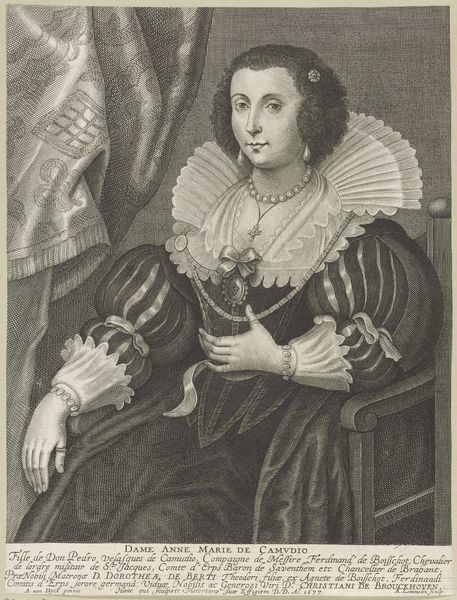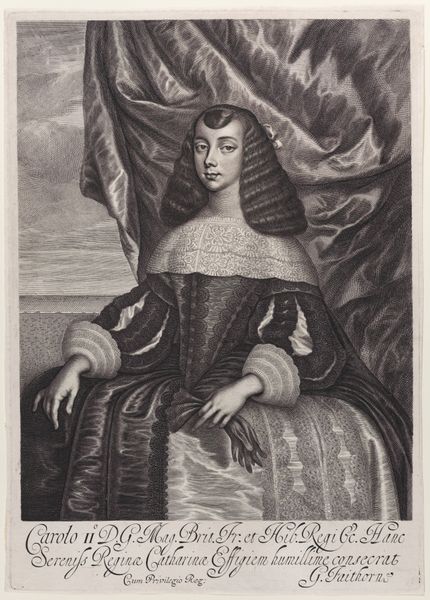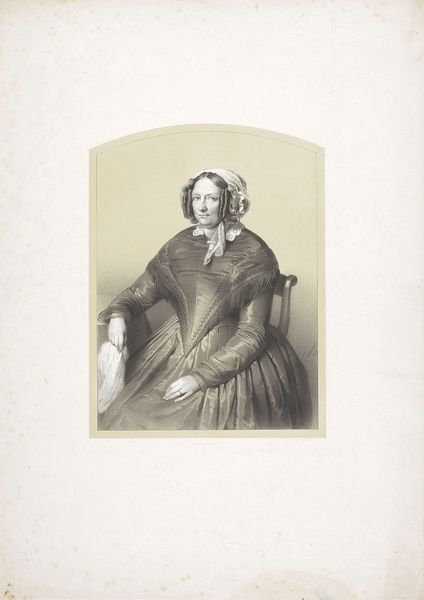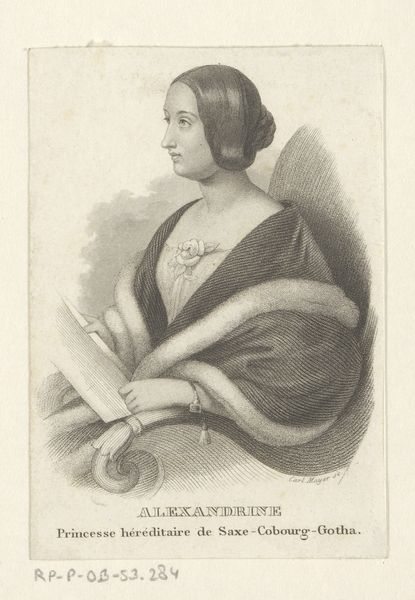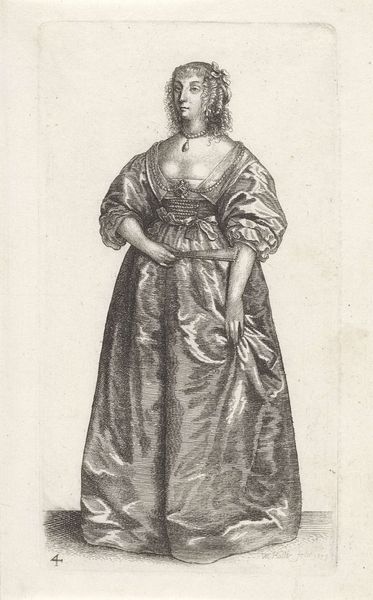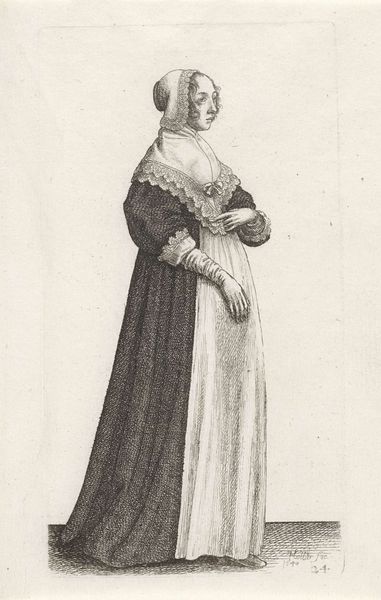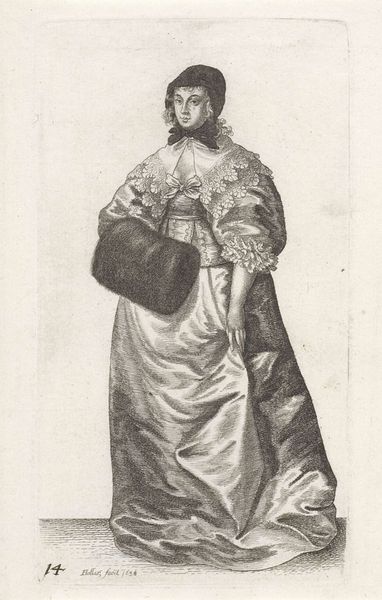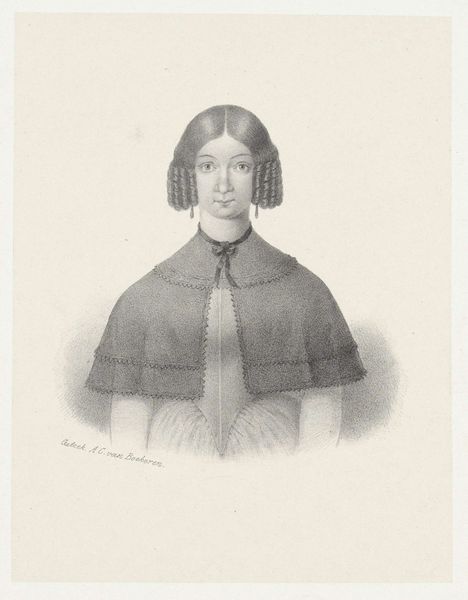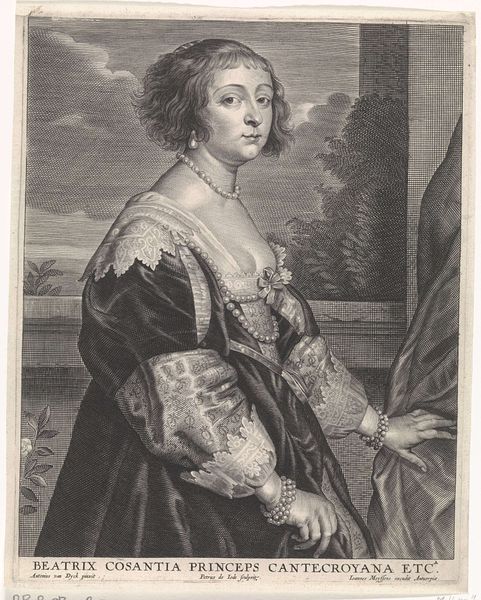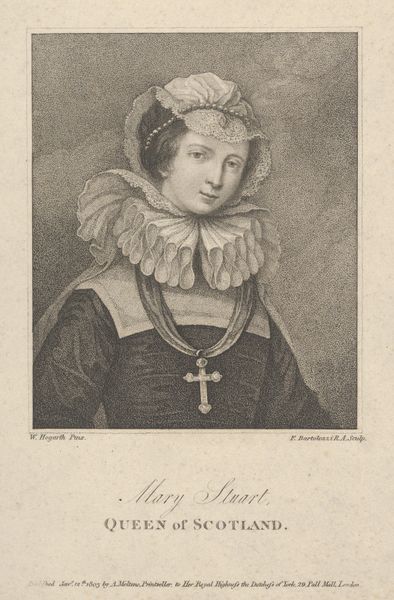
drawing, print, graphite, engraving
#
portrait
#
pencil drawn
#
drawing
# print
#
pencil drawing
#
romanticism
#
graphite
#
portrait drawing
#
engraving
Dimensions: height 234 mm, width 225 mm
Copyright: Rijks Museum: Open Domain
Editor: So, this is "Portret van Everarda Francisca Half-Wassenaer van Onsenoort," made sometime between 1822 and 1845 by Daniël Nederveen. It appears to be a print, maybe an engraving. The level of detail achieved with, what I assume were, fairly rudimentary tools is fascinating. What stands out to you? Curator: The texture itself. Consider the social implications embedded within the printmaking process. The repetitive, almost mechanical act of engraving, transferring an image, and reproducing it shifts the focus from unique, singular artistic genius to a distributed mode of production. What statement is being made by employing these methods? Editor: Hmm, are you suggesting it challenges the idea of fine art versus a more accessible form, since it is easier to replicate than painting? Curator: Precisely! It allows a wider audience access to this portrait, suggesting a democratizing force at play, perhaps mirroring a change in the social perception of portraiture itself. Who was this woman, and what did she represent within her society? Understanding the economic structures supporting portrait production would give insights into consumption during that time. The materiality—the paper, the ink, the tools used—they are all vital aspects of this portrait’s story. How would that influence perception and interpretation? Editor: So, it’s not just about the woman depicted, but the whole system that made this image possible and the effect it has on its intended audience? I guess the print as an object itself becomes a signifier. Curator: Exactly. The physical qualities are the foundation upon which any interpretation can be built. How the print functioned within the networks of exchange and visibility helps us grasp its significance. What questions about its creation are most important? Editor: I see the work from a new perspective. I didn’t realize I should consider these distribution questions! Curator: Exploring those production questions adds vital context. I have found a deeper meaning in looking at the materials as tools of societal documentation.
Comments
No comments
Be the first to comment and join the conversation on the ultimate creative platform.
